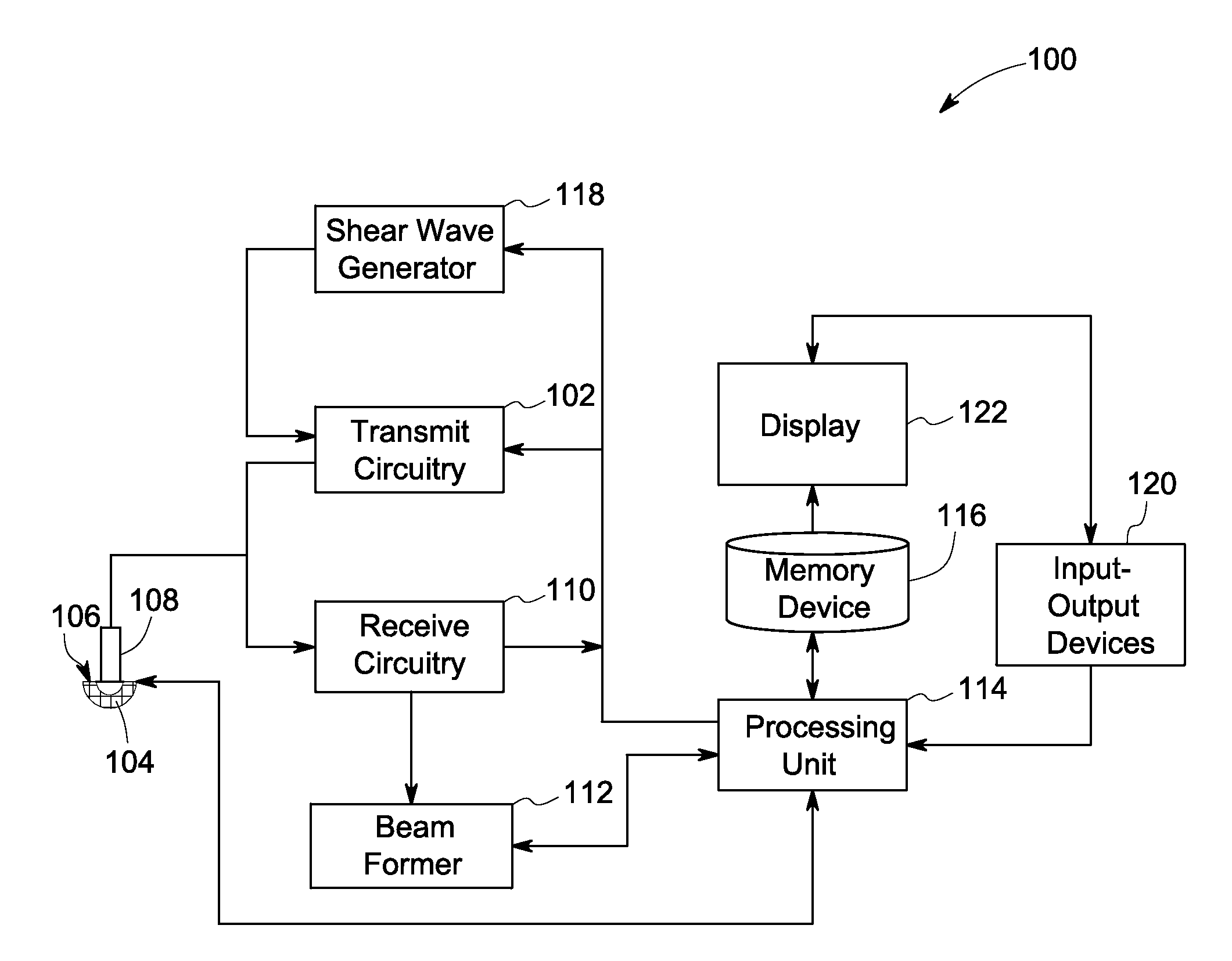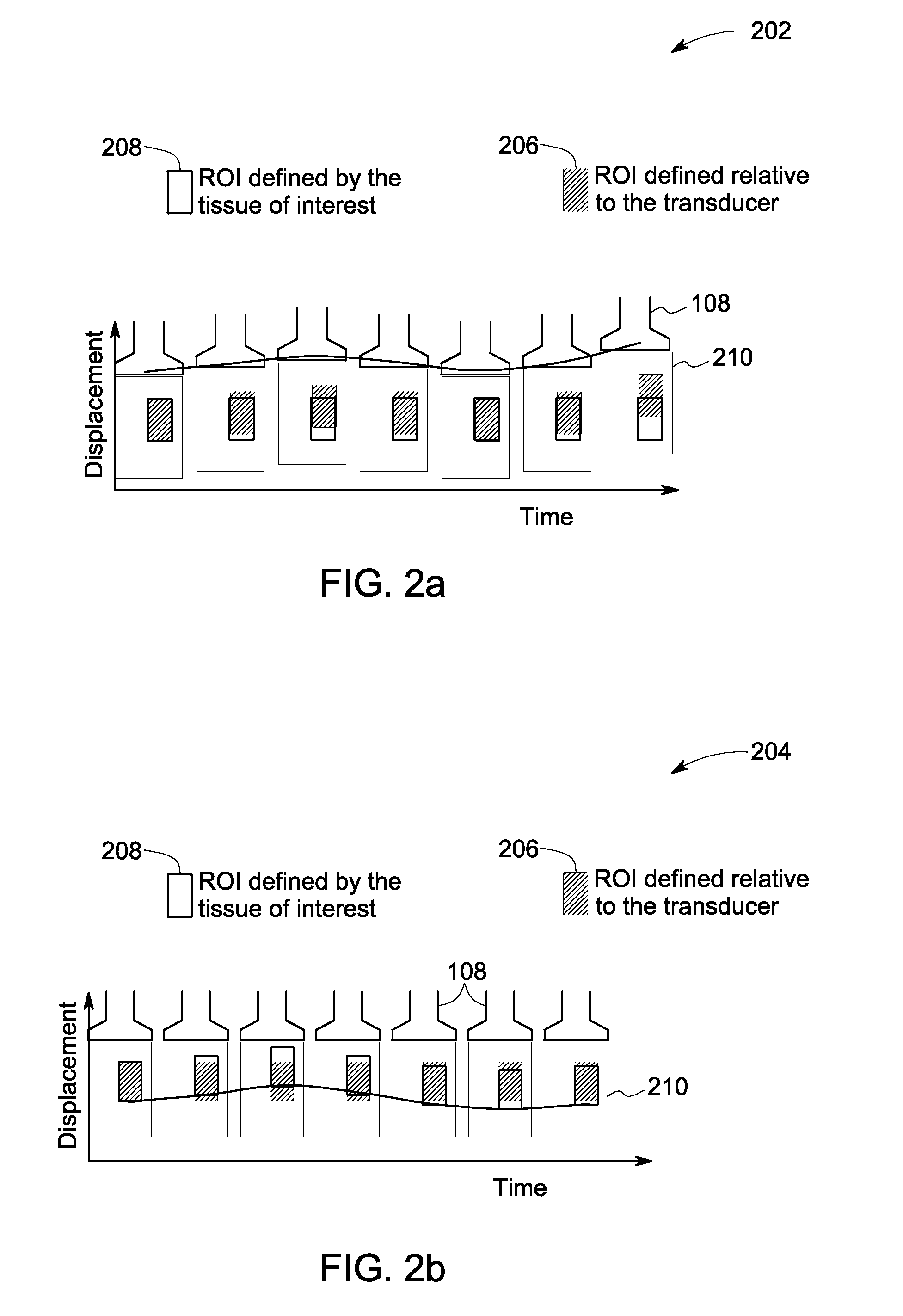Methods for reducing motion artifacts in shear wave images
a technology of motion artifacts and shear wave, applied in the field of diagnostic imaging, can solve the problems of probe and patient motion artifacts, shear wave displacement images, and the like, and achieve the effect of reducing motion artifacts
- Summary
- Abstract
- Description
- Claims
- Application Information
AI Technical Summary
Benefits of technology
Problems solved by technology
Method used
Image
Examples
Embodiment Construction
[0025]The following description presents systems and methods for reducing appearance of motion artifacts in shear wave displacement images. Particularly, certain embodiments illustrated herein describe the systems and the methods that efficiently mitigate the errors in the measured displacement values of one or more target locations in the ROI of a subject by evaluating the measured values with reference to the displacements measured at one or more tracking locations. The systems and methods use the evaluation for substantially improving the estimation of motion-corrected displacement values of the target locations, which in turn, reduces motion artifacts in the corresponding reconstructed images.
[0026]Although the following description includes embodiments relating to ultrasound imaging, the various embodiments may also be implemented in connection with other types of medical imaging systems, such as magnetic resonance imaging (MRI) systems, computed-tomography (CT) systems, and sy...
PUM
 Login to View More
Login to View More Abstract
Description
Claims
Application Information
 Login to View More
Login to View More - R&D
- Intellectual Property
- Life Sciences
- Materials
- Tech Scout
- Unparalleled Data Quality
- Higher Quality Content
- 60% Fewer Hallucinations
Browse by: Latest US Patents, China's latest patents, Technical Efficacy Thesaurus, Application Domain, Technology Topic, Popular Technical Reports.
© 2025 PatSnap. All rights reserved.Legal|Privacy policy|Modern Slavery Act Transparency Statement|Sitemap|About US| Contact US: help@patsnap.com



